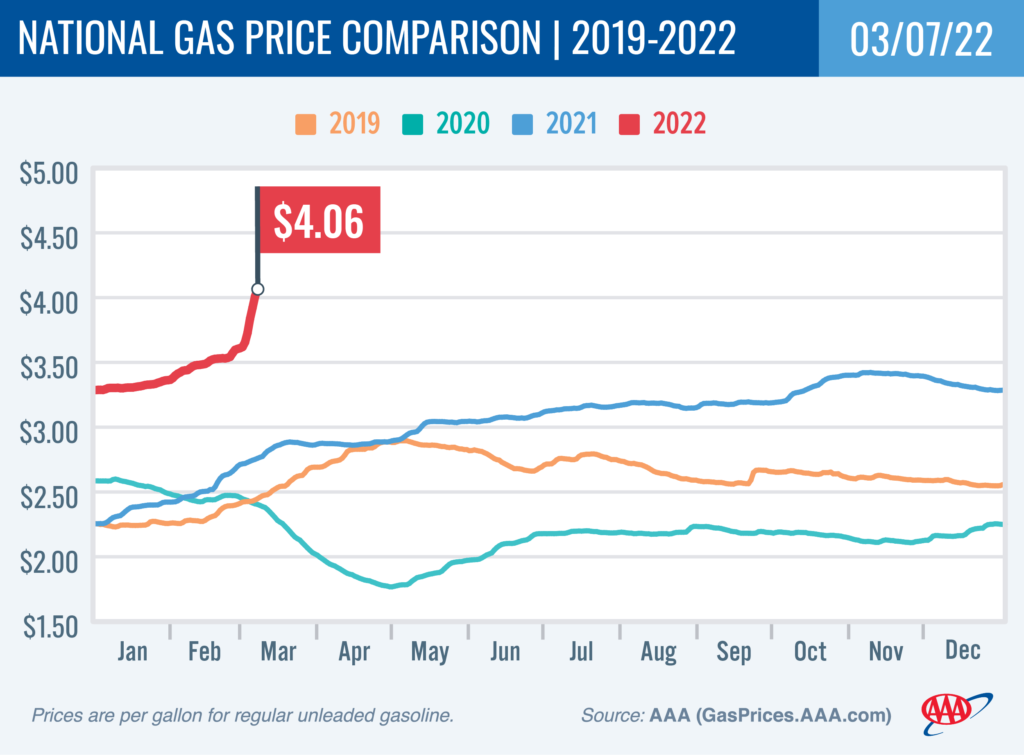Article: Russia-Ukraine Conflict Continues to Cause Pain at the Pump
WASHINGTON, D.C. (March 7, 2022)—As the conflict between Russia and Ukraine continues, crude prices soar, leading to higher pump prices in the U.S. The national average for a gallon of gas is $4.06, a staggering 45 cents more than a week ago, 62 cents more than a month ago and $1.30 more than a year ago. The national average has not been this high since July 2008.
This is Joe Biden’s fault. If he had not closed down our own pipe line which was making the United States oil independent, this would not be affecting Americans the way it is today.
Last week, the International Energy Agency (IEA) announced a coordinated release of crude oil from its 31 member countries’ strategic reserves, including the U.S., Germany, Canada, South Korea, and Mexico, to help counter the impact of rising crude prices. On Friday, IEA said member states committed to releasing a total of 61.7 million bbl from their strategic reserves to reassure markets roiled by the fallout from Russia’s invasion of Ukraine. This amount—half of which is expected to come from the U.S.—is the largest coordinated release since IEA was founded in 1974. Despite this announcement, the impact on pricing has been limited given that the amount of oil planned for release is small in comparison to the amount that flows daily from Russia to other countries around the globe. According to IEA, Russia exports approximately 5 million b/d of crude oil, representing about 12% of its global trade.
Russian exports of crude oil equates to other countries giving them money. If we are to assume that the attack on Ukraine is unjust, which many believe, then giving them money to continue to do so, is highly unethical.
According to new data from the Energy Information Administration (EIA), total domestic gasoline stocks decreased by 500,000 bbl to 246 million bbl last week. Meanwhile, gasoline demand rose slightly from 8.66 million b/d to 8.74 million b/d. The increase in gas demand and a reduction in total supply contribute to rising pump prices. But, increasing oil prices play a leading role in pushing gas prices higher. Consumers can expect the current trend at the pump to continue as long as crude prices climb.

Quick Stats
The nation’s top 10 largest weekly increases: Rhode Island (+58 cents), Nevada (+57 cents), Connecticut (+56 cents), Kentucky (+56 cents), Alabama (+56 cents), West Virginia (+55 cents), Virginia (+55 cents), Massachusetts (+54 cents), New Hampshire (+52 cents) and New Jersey (+52 cents).
The nation’s top 10 most expensive markets: California ($5.34), Hawaii ($4.69), Nevada ($4.59), Oregon ($4.51), Washington ($4.44), Alaska ($4.39), Illinois ($4.30), Connecticut ($4.28), New York ($4.26) and Pennsylvania ($4.23).
Americans should ALL be furious at the fact we are affected by what Russia is doing.





